ads
Veterinary services in Liverpool
Veterinary services in Liverpool
Welcome to Parker & Crowther
Here at Parker and Crowther, our dedication and skill will provide the best treatment using cutting-edge methods, but not forgetting patience and a love of animals so that your pet recover quickly. The right care is crucial. Every animal needs individual care. Many animal lovers find this a challenge, but there's no need to worry. Proper care is easy when you know how. Just ask us. We shall be happy to advise you. If your pet needs help urgently out of hours, hospital and emergency cover is arranged with Barn Lodge Veterinary Hospital.
Our range of services consists not only veterinary examinations. We are happy to advise you on any questions you may have on the best practice of in keeping, caring for and feeding animals. Please contact us – we will be there for you.
If your pet is already ill, we will administer rapid treatment, causing as little distress as possible. In many cases, regular check-ups can lead to detection and specific treatment of diseases in their early stages.
Here is a summary of our treatments:
Outpatient treatment and advice
- General examinations and treatment of dogs, cats, rabbits, guinea pigs, other small rodents, ferrets and birds
-Health Checks for dogs, cats, rabbits, guinea pigs
- Vaccinations for dogs, cats, rabbits and ferrets
- Health certificates and advice on foreign travel (passports)
- Microchipping
- Advice on feeding puppies, overweight animals and rodents and in certain cases of illness (food allergies, diabetes, liver and kidney diseases)
Laboratory diagnostics
- Comprehensive in-house blood testing
- Use of external laboratories for tests we cannot run in-house
Dental care and treatments
- Wide range of dental products available
- Facility available for dental scale and polish and removal of teeth
Ultrasound
- Ultrasonic testing is a modern method of detecting certain diseases, tumours and pregnancy.
X-Rays
- X-Ray examination to diagnose fractures, detect foreign bodies, internal diseases (bladder or kidney stones) and tumours, BVA Hip Scores
Surgery
- Neutering dogs, cats, rabbits, ferrets and rodents
- Soft tissue surgery
Worming & Flea Control
Fleas
When pet owners are asked what they dread most about the summer months, the topic that invariably comes up most is fleas!
Fleas on dogs and cats! These small dark brown insects prefer temperatures of 65-80 degrees and humidity levels of 75-85 percent — so for some areas of the country they are more than just a “summer” problem.
Dogs and cats often get infested with fleas through contact with other animals or contact with fleas in the environment. The strong back legs of this insect enable it to jump from host to host or from the environment onto the host. (Fleas do not have wings, so they cannot fly!) The flea’s bite can cause itching for the host but for a sensitive or flea-allergic animal, this itching can be quite severe and leads to hair-loss, inflammation and secondary skin infections. Some pets, hypersensitive to the flea’s saliva, will itch all over from the bite of even a single flea!
The flea information presented here will focus on treatment for and prevention of fleas, which, let’s face it, is just as important to the pet as it is to the pet’s caretakers!
How do you know if fleas are causing all that itching – formally known as pruritus? Generally, unlike the burrowing, microscopic Demodex or Scabies Mites, fleas can be seen scurrying along the surface of the skin. Dark copper colored and about the size of the head of a pin, fleas dislike light so looking for them within furry areas and on the pet’s belly and inner thighs will provide your best chances of spotting them.
Look for “flea dirt”, too. “Flea dirt” looks like dark specks of pepper scattered on the skin surface. If you see flea dirt, which is actually flea feces and is composed of digested blood, pick some off the pet and place on a wet paper towel. If after a few minutes the tiny specks spread out like a small blood stain, it’s definitely flea dirt and your pet has fleas!
Understanding the Flea Life Cycle
In order to understand how and why treatment options work, we must first understand the flea’s life cycle since the various modern treatment and prevention products work on different parts of this life cycle. There are several stages to its life cycle: egg, larva or caterpillar, pupa or cocoon, and adult. The length of time it takes to complete this cycle varies depending upon the environmental conditions such as temperature, humidity, and the availability of a nourishing host.
The flea’s host is a warm-blooded animal such as a dog or cat (or even humans!) However, the various flea stages are quite resistant to freezing temperatures. The adult female flea typically lives for several weeks on the pet. During this time period she will suck the animal’s blood two to three times and lay twenty to thirty eggs each day. She may lay several hundred eggs over her life span. These eggs fall off of the pet into the yard, bedding, carpet, and wherever else the animal spends time.
These eggs then proceed to develop where they have landed. Since they are about 1/12 the size of the adult, they can even develop in small cracks in the floor and between crevices in carpeting. The egg then hatches into larvae. These tiny worm-like larvae live among the carpet fibers, in cracks of the floor, and outside in the environment. They feed on organic matter, skin scales, and even the blood-rich adult flea feces.
The larvae grow, molt twice and then form a cocoon and pupate, waiting for the right time to hatch into an adult. These pupae are very resilient and are protected by their cocoon. They can survive quite a long time, waiting until environmental conditions and host availability are just right. Then they emerge from their cocoons when they detect heat, vibrations and exhaled carbon dioxide, all of which indicate that a host is nearby. The newly emerged adult flea can jump onto a nearby host immediately.
Under optimal conditions, the flea can complete its entire life cycle in just fourteen days. Just think of the tens of thousands of the little rascals that could result when conditions are optimal!
Knowing this life cycle allows us to understand why it has always been important to treat both the host animal and the indoor and outdoor environment in order to fully control flea numbers. Simply sprinkling some flea powder on your pet will not work; simply vacuuming the home vigorously will not work, simply placing a flea collar or using a flea topical on your pet will not work.
Worming
As a caring pet owner, you’ll know that worms come with the territory, so worming your pet is important. But why should you worm your pet regularly when they seem healthy?
Well, even without showing obvious symptoms, a pet without an appropriate worming treatment plan could be suffering from a worm infection. Furthermore, worms carried by cats and dogs can pose a health risk, not just to the pet in question, but to other animals, and to humans.
Signs aren’t always obvious.
Cats & dogs can appear healthy even when they have worm infections. Detecting infection can be tricky as worm eggs are too small to be easily visible in your pet’s faeces. It is therefore extremely important to speak to your vet about the most appropriate treatment plan for your pet.
In these website pages, you will find information on worms that your dog or cat are at risk from, as well as the potential implications for your family. Specific signs will be described for each worm, but remember that not all worm infections will be obvious in your pet, and some signs may be more general such as:
-‘scooting’ – some worms shed segments that could stick to your pet’s bottom and become itchy, so they may drag their bottom along the ground with their back legs.
Doing this also means that your pet will be rubbing their infected bottom on your carpet which is unhygienic:
- weight loss
- vomiting
- diarrhoea
- a dull, lifeless coat
- change in appetite (may be increased or decreased depending on the worms present)
- lack of energy
- a pot bellied appearance (most commonly seen in puppies and kittens)
- breathing difficulties
- any general changes in behaviour
Prescriptions
Pets on long – term medication must be examined by a veterinary surgeon every 3 -6 months (12 months for flea & worming treatment).
The vet may request more frequent checks and / or regular blood testing (this is at their discretion).
Prescription veterinary medicines can only be prescribed by a veterinary surgeon, but you may request a prescription to purchase the drugs at a pharmacy or via the internet.
Repeat prescriptions MUST be requested at least 24 Hours in advance so that a Veterinary Surgeon can authorise them. Please telephone the surgery or call into reception to request for your pets prescription.
There is a charge of £13.91 for a written prescription to cover administration
Multiple items (2-3) £20.39
Multiple Items (>3) £27.76
Prescription Review Consultation – £22.00
Vaccinations
Make sure you protect your pets and keep them safe by keeping up to date with their vaccinations.
If the number of pets protected by vaccines drops our animal companions could be at risk from an outbreak of infectious diseases, some of which can be transmitted to humans.
When to vaccinate
When puppies and kittens are born they are usually protected from infections by their mother’s milk, providing she has been regularly vaccinated. However, this protection only lasts a few weeks so they need regular vaccinations from an early age.
Puppies are typically vaccinated at 8 and then 10 weeks,
Kittens at 9 and then 12 weeks.
Your young pet should then be given a booster 12 months after their first vaccination and then every year thereafter.
Rabbits need regular vaccinations too, starting at 8 weeks of age then a booster given every year
Older pets need protecting too, as their immunity can decline.
Vaccination Prices
Dog vaccinations
Vaccination puppy course – £69.71. Microchip optional at £14.40
1st vaccination at 8 weeks old, 2nd at 10 weeks old
Cat vaccinations
Vaccination kitten course – £64.58 (including leukaemia vaccination), £51.66 (without leukaemia vaccination). Free microchip with full course.
1st vaccination at 9 weeks old, 2nd at 12 weeks old.
Rabbit vaccinations
Rabbit myxo + VHD £30.20
Rabbit HVD2 £22.00
Boosters
Dog vaccination booster
Canine booster price £41.50
Kennel cough £30.20
Kennel cough with booster £22.50
Cat vaccination booster
Feline booster price with leukaemia vaccination £40.50
Feline booster price without leukaemia vaccination £36.50
X-ray & Ultrasound
Ultrasound
Our Birkdale and Formby Surgeries have an Ultrasound Machine that can be used to scan your animals on site.
An ultrasound examination, also known as ultrasonography, is a non-invasive imaging technique that allows internal body structures to be seen by recording echoes or reflections of ultrasonic waves. Unlike x-rays, which are potentially dangerous, ultrasound waves are considered to be safe.
Ultrasound equipment directs a narrow beam of high frequency sound waves into the area of interest.
The sound waves may be transmitted through, reflected or absorbed by the tissues that they encounter.
The ultrasound waves that are reflected will return as “echoes” to the probe, and are converted into an image that is displayed on the monitor, giving a 2-dimensional “picture” of the tissues under examination.
Ultrasound examinations are of little value in examining organs that contain air. Ultrasound waves will not pass through air and therefore it cannot be used to examine normal lungs. Bone also stops ultrasound waves, so the brain and spinal cord are unable to be seen with an ultrasound study, and obviously, bones cannot be examined.
Whether it is for diagnosing pregnancy (from 5 weeks), scanning a bladder, liver, kidneys: your vet with inform you if this is the right decision for your pet undergoing treatment.
Please speak to your vet today if you would like to discuss this option for your animal.
Anesthesia is not usually needed for most ultrasound examinations, unless biopsies are to be taken. The technique is totally painless and most dogs/cats will lie comfortably while the scan is being performed. Occasionally, if the animal is very frightened or fractious, a sedative may be necessary.
In most cases, the fur must be shaved to perform an ultrasound examination. Since ultrasound waves are not transmitted through air, it is imperative that the hand-held probe makes complete contact with the skin. In some cases, such as pregnancy diagnosis, it may be possible to get adequate images by moistening the hair with rubbing alcohol and applying a copious amount of water-soluble ultrasound gel.
X-Ray
Our Daleside Surgery in Birkdale and our Formby Surgery house our digital radiography machines.
An X-ray can be necessary in the treatment of your pet for many different reasons, you will be advised on this by your vet.
What is Radiography?
An X-ray (radiograph) test is a quick and painless method used to diagnose many health conditions. The procedure involves exposing part of your body to a small dose of ionising radiation (X-rays). The X-rays travel through your body where they are absorbed at different levels by different tissues such as bones, muscles and organs. When the X-rays come out on the other side of your body they hit a photographic film and make a pattern of light and shade. The images produced are black, white and grey.
Why Might My Pet Need An X-ray?
There are many reasons why your pet may need an x-ray at some point during his or her life. The most obvious reason would be after a trauma such as being in a road traffic accident where we want to check for any broken bones. Other reasons include:
Bone x-rays to look for deformities, growth problems, infection, fractures and to plan fracture repairs
Joint x-rays to look for damage, inflammation or arthritic changes
Abdominal x-rays to look at the soft tissues and organs for signs of disease
Chest x-rays to look for signs of heart or lung disease
Hip and elbow scoring for breeding purposes
Dental x-rays
What Happens When My Pet Has An X-ray?
In most cases, a general anaesthetic or heavy sedation is required to perform an accurate x-ray in animals. This is because most pets, however well behaved, will not sit completely still in the required positions to obtain high quality diagnostic x-rays. In some situations (for example a cat which has difficulty breathing), we may take a survey x-ray with the animal fully conscious to remove the additional risk associated with an anaesthetic in these cases.
Animals are not allowed to be manually restrained for x-ray under the guidelines set down by the Royal College of Veterinary Surgeons (RCVS) for health and safety reasons.
Once your pet is stable under the anaesthetic or sedation, the vet will position your animal appropriately for the x-ray. It is usually necessary to take different views of the same part of the body – for example if we were taking x-rays of the knee joint we would need a “lateral” view (left to right) and a front to back view as a minimum. With limb x-rays we also usually need to take images from the opposite leg to use as a comparison.
Once the vet is happy with the x-ray positioning, they will adjust the exposure settings to obtain a good quality image. Once the x-ray has been taken it is developed in an x-ray processor. The final films can then be examined and evaluated.
Surgery
Pre – Operative Advice for your pet
All pets in this practice are anaesthetised with the safest and most modern veterinary anaesthetics as standard, therefore reducing risks to a minimum. Please expect some areas of your pet to be shaved to allow medication to be given and monitoring equipment to be used.
To ensure that your pet is ready for admission, and procedures run smoothly on the day please follow the following instructions unless specifically told otherwise:
Please bring your pet to the surgery you have booked with on the morning of the operation. They should be as clean and dry as possible (a quick shampoo the previous day helps (for dogs!) in preparation for going into an operating theatre.
No food should be given after 7pm the evening before surgery. Water should be available overnight and taken away by 7am on the morning of admission. This is extremely IMPORTANT and if not adhered to may lead to the operation being postponed.
Please take your pet out for a short walk in the morning to empty the bowels and bladder.
Please keep cats indoors overnight, giving them access to a litter tray.
Please leave food and water with Rabbits at all times.
Before any anaesthetic or surgical procedures can begin we must, by law, have a consent form completed. This will need to be signed by the owner or an agent acting on the owner’s behalf, but they must be over the age of 18.
Pre-operative health check
You will be asked to have a FREE pre-operative health check a few days before the operation. This is to check the health of your pet and to talk about the operation e.g. to check if your female is showing any signs of a false pregnancy and for males both testicals are descended, in the case of neuterings.
You will be offered a pre operative blood test at this appointment which will be carried out before the operation. This is to check the liver and kidney function of your pet and can detect underlying conditions that may affect our choice of anaesthetic. We do recommend this for pets over the age of 8 but this can be performed at any age.
We will require a contact number where we can contact you all day, or if you are unavailable an agent who can act on your behalf. We require this number just incase we need to speak to you about treatment, or we fine something unexpected and need your permission to act upon it.
After surgery
Please phone the surgery at Midday where we can then inform you how the procedure went and the time that your pet can be discharged.
After a general anaesthetic they may be drowsy and we advise that you to collect your pet by car or some other means of transport.
A post operative care sheet will be given to you when you collect your pet from the surgery, which has information and advice for your pet after an anaesthetic for you to read at home.
Your pet will be sent home wearing an Elizabethan Collar which they need to wear for the duration that there are stitches in place.
They will also be sent home with a tin/pouch of Royal Canin Sensitive Control Recovery Diet.
Please note that payment is required when your pet is collected.
If you are unable to attend the surgery for the operation for any reason please can you let the surgery know as soon as possible so that slot can be allocated to another animal.
If you have any queries or concerns please do not hesitate to contact the surgery.
Contact Us
Daleside Veterinary Surgery
309-311 Liverpool Road
Birkdale, Southport, PR8 3DE
01704 575606
daleside@parkerandcrowther.co.uk
- veterinal
- Location
- Liverpool
- Country
- United Kingdom
- Address
- 309-311 Liverpool Road, Birkdale,
Southport, PR8 3DE
Locate on map - Phone number
- Show Phone
- Show E-mailThis email address is being protected from spambots. You need JavaScript enabled to view it.
- Website
- https://need-a-pro.com/
- Ad Type
- Job search
- Category
- Pet Care
- Subcategory
- Vets
- Date added
-
Sunday, 13 January 2019
7 years ago - Views
- 5331
- Id
- 1691
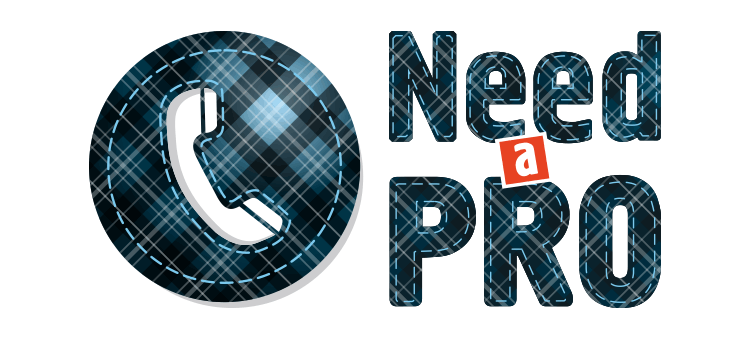

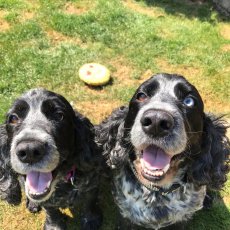



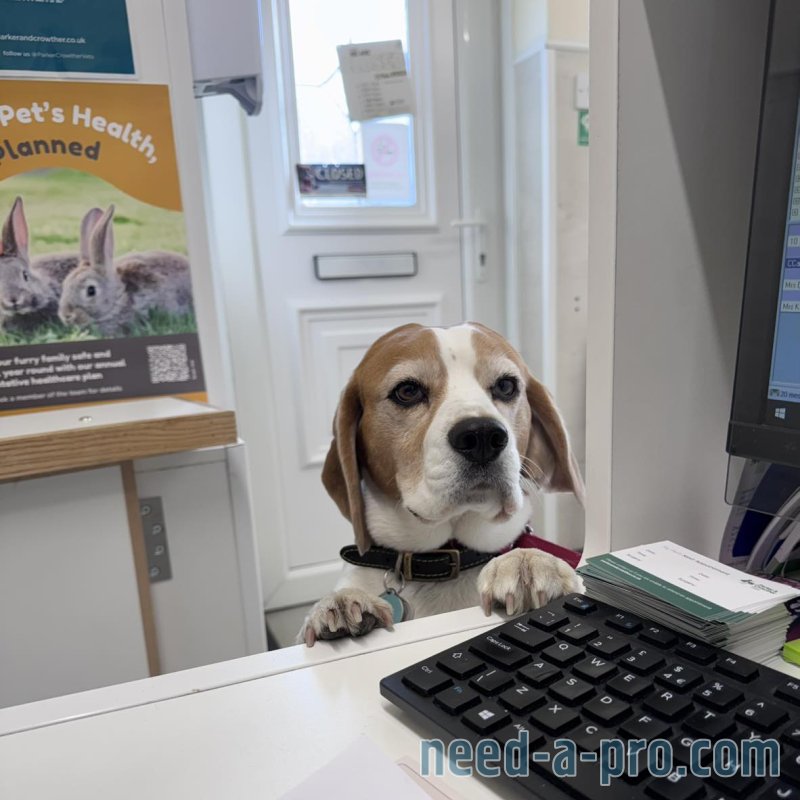
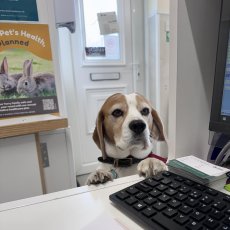
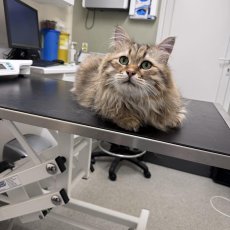
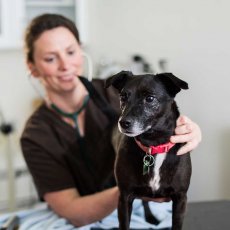
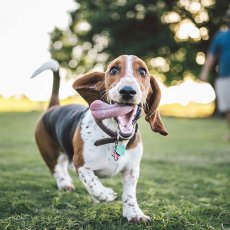
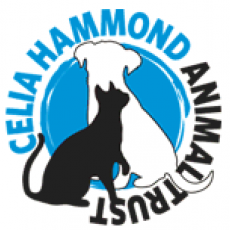
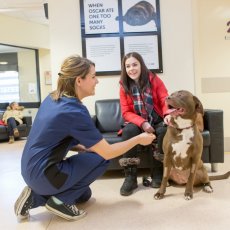

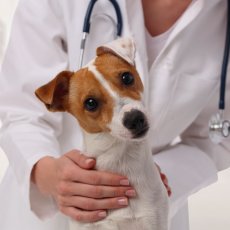

 Vectora Design
Vectora Design